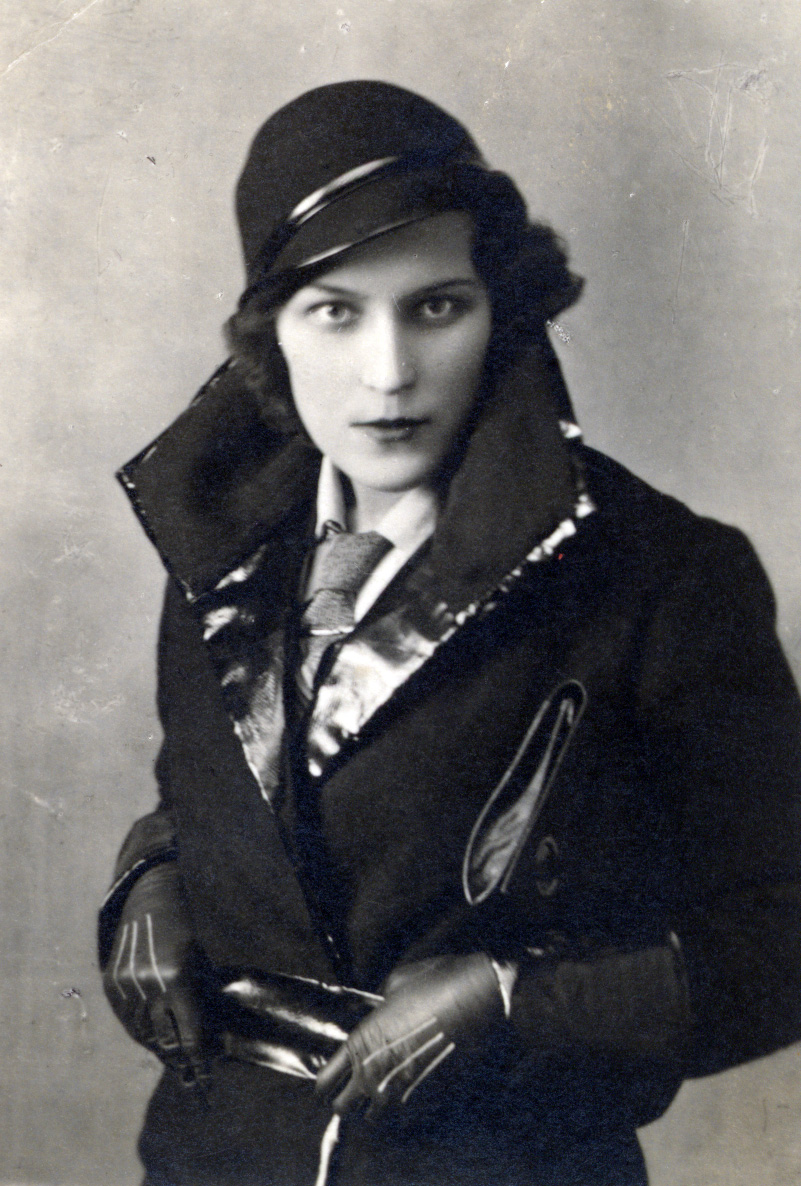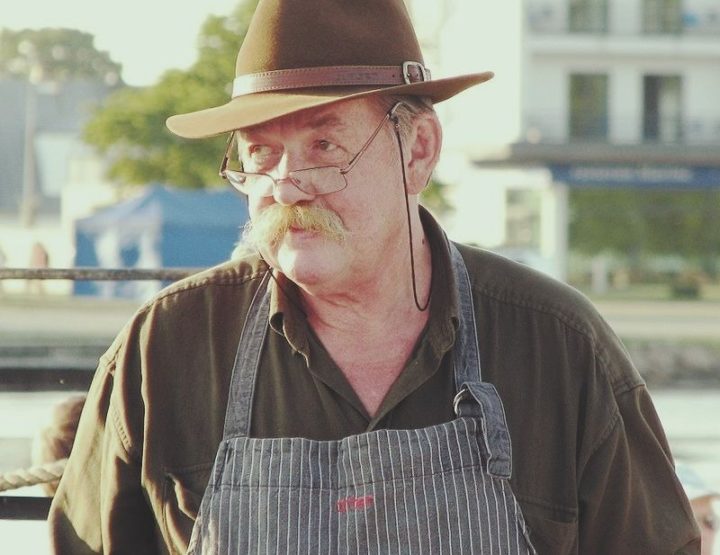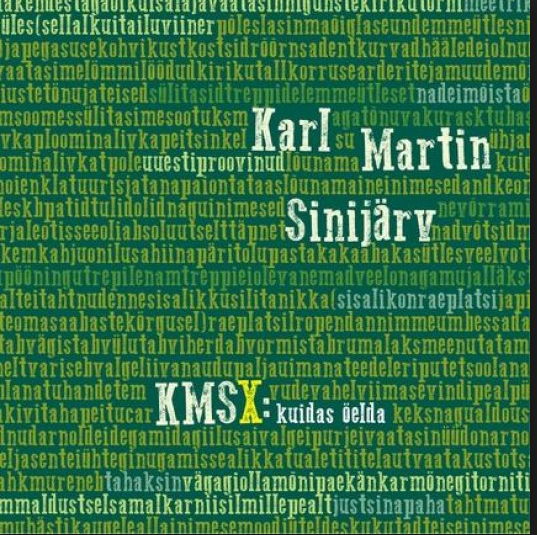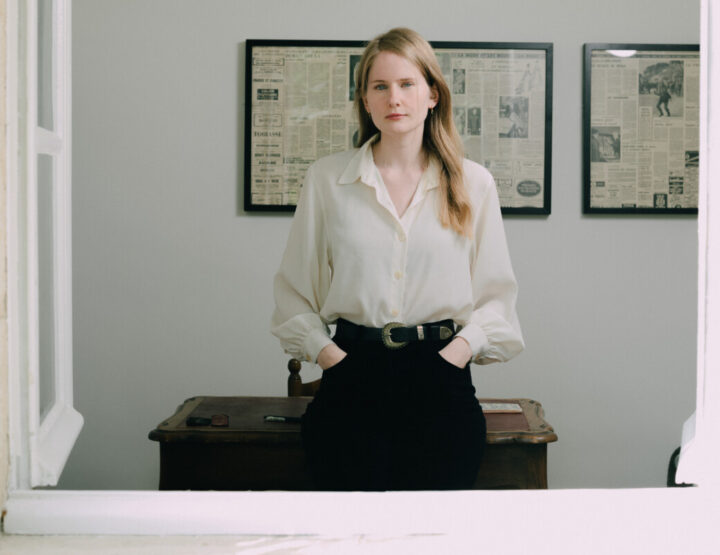On 23 November 2006, one hundred years will have passed since the birth of Betti Alver, one of the most remarkable of all Estonian poets. Women have always played a significant, occasionally crucial, role in Estonian poetry. This goes back to pre-literature times, i.e. folk poetry. It was mostly women who created lyrical folk songs, a highly original and most valuable part of our folklore. Women were the mothers-of-song, as they were deferentially called. At nearly all stages of 19th and 20th century poetry, women lyrical poets have clearly stood out: Lydia Koidula (1843-1886) during the national awakening period, Anna Haava (1864-1956) at the turn of the century, Marie Under (1883-1980), in the innovation period of the early 20th century, and finally Betti Alver, Debora Vaarandi (1916), Viivi Luik (1946) and others.
Soothsayer
Betti Alver, born in 1906 in a small railway settlement in Jõgeva, was part of the first generation of Estonian intellectuals to acquire their education in the predominantly Estonian-language educational system of the Republic of Estonia (1918-1940). Alver finished grammar school in Tartu and studied for a while at the University. For her generation, using one’s mother tongue in every field of life was natural, although their knowledge of foreign languages and world literature was quite impressive as well. After President Konstantin Päts established his authoritarian regime in 1934, a number of younger intellectuals opposed the simplified understanding of literature in cultural policy, and its usage as a mere tool of national propaganda. Alver’s later work in the 1960s – 1980s also shows her intellectual superiority and opposition to the Soviet totalitarian power.
Betti Alver started as a writer well before the 1930s – as a prose writer. At the time of her studies at Tartu University she published the novel Tuulearmuke (The Wind’s Paramour, 1927), depicting the development of a young girl. Although not strikingly innovative or surprising, it nevertheless stood out for the author’s obvious skill with words and witty observations. The work became quite popular and, at least at first, Alver continued as a prose writer.
In 1931 she published her first work in verse – a narrative poem titled Lugu valgest varesest (A Tale of the White Crow), inspired by Pushkin’s famous verse-novel Eugene Onegin. The critics indeed called the poem’s bohemian female protagonist ‘Onegin in a skirt’, and the work was not taken very seriously. After that, however, Alver began publishing lyrical poems in various papers, and in 1936 the collection Tolm ja tuli (Dust and Fire) came out. The well-known Estonian poetry critic Ants Oras said that it surpassed all previous poetry debuts in Estonian literature in maturity. Although not all critics shared Oras’s enthusiasm, it is still obvious that Dust and Fire attracted extraordinary attention and placed the author in the centre of Estonian poetry. The reviewers enthused about both the content and the form of Alver’s poems, but especially the form. Indeed, the poetic language of the young Alver flowed with such abandon and naturalness that it was a miracle it fit into the rigid classical form of rhythmical and rhyming verse! In the work of Alver and some of her contemporaries, the language of Estonian poetry of the 1930s confirms its classical maturity.
The mastery of form of the young Alver is the more remarkable because the poet’s attitudes, and her views on life and the world – in sum, the contents of her poetry — by no means express any mature experience or balance. In her poetry, she is a restless seeker, a questioning and doubting human being who dares set herself lofty, not totally attainable, goals. The opening poem of the book Ecstasy expresses a dizzying sense of exhilaration mixed with fear, when a person sets out on the road of self-surpassing and of discovering the new.
Alver’s human being examines the available possibilities, the borders of his existence, and tries to expand them. This kind of poetry largely deals with ‘metaphysical’ questions, but at the same time it contains an inherent down-to-earth vitality, a magical sense of life. Almost as much as intellectual heights, the poet is fascinated by the abysses of dark urges, the side of life considered low, as it were. Thus Alver’s poetry is characterised by forceful dramatic conflicts, clashes between the mind and feelings, the lofty and the low. The poem Black Madonna portrays a mother whose soul is forever split between two sons – the heavenly and the earthly (or even satanic). Despite quite fierce oppositions, the main tone of Alver’s poetry is positive, spirited and proud. Even when life is represented by a filthy and banal pub, as in the poem titled Priiskaja (Squanderer), its windows display the ‘panorama of infinity’.
The world of Squanderer and of many other poems resembles the spirit of the Renaissance – they contain grim humour in the style of the great Frenchmen Francois Villon and Francois Rabelais, plus a lot of spot-on, and positive, irony. Elegant witticism was among Alver’s essential qualities from the very start, in her prose works and longer poems, and her thought and language remain perceptive also in her later oeuvre. Not infrequently, however, quite different emotions appear and overshadow irony: an overwhelming joy, reverence before the sublime, suffering and becoming pure via it, continuing childish sensitivity, curiosity and the joy of play.
We must certainly mention here Alver’s special dedication to the topic of poetry, and of art itself. The Birth of Poetry, To Art, To the Master, The Bard, and others are remarkably beautiful and exalted poems – and very far from the unreal, art-glorifying approach to life that Alver was accused of at one point. Instead, this is poetry expressing deep humanity because, for Alver, the vitality of true poetry describes the greatness of the creative human mind, the most beautiful and best side of man. Considering the times back then – and not only back then! – the ethical, even social, aspect in treating art is highly significant. Karl Muru, the most serious Alver scholar, has summarised this succinctly: for Alver, art becomes great not only through beauty, but primarily because of an incorruptible love of truth. Art embodies honesty and remaining true to oneself, the human quintessence.
Alver was by no means alone in these views. In the course of developing into a poet, her academic circle of friends played an essential role. In 1931 she met the poet Heiti Talvik (1904-1947), who had studied at Tartu University, and through him she met other intellectuals. Talvik, a few years older than Alver, was a connoisseur of world literature, ardent admirer of classic literature and, in fact, a purer ‘lyric soul’ than Alver. He had occasionally published his verse since 1925 in the main literary magazine in Estonia, Looming, and his first collection came out in 1934. Relations between Alver and Talvik became increasingly close, and they married in 1937.
The group of poets which included, besides Alver and Talvik, Uku Masing, Bernard Kangro, Kersti Merilaas and others is known in Estonian literary history as Arbujad (Soothsayers) or simply a r b u j a d after the title of their joint collection published in 1938. The role of the Soothsayers in Estonian poetry is doubtless remarkable, although their oeuvre has evoked quite diverse opinions at different times. More or less unanimous opinion applauds the Soothsayers’ skill with form, but the weighty and meaningful contents have not always been noted. During the Stalinist period of the Soviet occupation, skill with form was considered almost a sin, as it alluded to the condemned Western decadence and formalism.
It has been argued in modern times that the Soothsayers were partly ‘guilty’ of the old-fashioned nature of 20th century Estonian poetry. By the end of the independent Republic of Estonia they had reputedly created such an influential school of poetry, based on European traditions and conservative in form, that until the 1990s almost all Estonian poetry was unable to shake off its impact and develop along the lines of innovative modernism. This, of course, is a somewhat simplified attitude. The reasons for the strong traditional approach in 20th century Estonian poetry are more general and more historical. On the other hand, the poetry of the Soothsayers did not remain the same as it was in the 1930s.
20th century Estonian mother-of-song
Femininity is one quality not too willingly attributed to Betti Alver. This is especially true for her earlier work of the 1930s, which critics have regarded as being masculine in the positive sense of the word, even more intelligent and sensible than the poems of many male authors. Harsher critics have blamed Alver for her cool and excessively intellectual approach, lack of sincerity and emotions. True enough, there are practically no intimate love lyrics in Alver’s poetry of her younger years. The poet herself has said that femininity was not the yardstick of poetry.
We cannot, however, totally agree that there is no feminine side in Betti Alver’s poetry at all – it is simply not as overwhelming and typical as in the work of some other poets. What strikes the eye is Alver’s elegance and skill in paying attention to the smallest detail, in addition to her vanity, perhaps even moodiness and capriciousness. Similar traits reflect a feminine temperament, especially in her younger poems.
In the late 1930s something started to change in Alver’s poetry: the side that might be called down-to-earth became more prominent. The world perceived via the senses acquired a deeper significance; a serious and attentive approach appeared along with her humour and irony. Alver’s poems exuded more fear, a sense of danger, a premonition of an extensive solar eclipse for Europe and Estonia. The poem Summer (1939) with its beautiful scenes of summer in a northern country, ends with the well-known motif of a cuckoo whose merry calling is soon terminated by a barley awn in its throat. In the poems written in 1940, the protagonist stands in a rainy and grey town, feeling anxiety and desolation. The titles of the poems are quite telling: In the Fog, A Blind Alley, Beyond Town, Nocturnal Song etc.
Alver’s painful frustration, caused by the occupation and war, is most revealingly seen in the poems written in 1942, which seem to form a cycle of their own. They were completed in the small village of Pühaste in southern Estonia, where Alver and Talvik often lived during the war years. Alver remembered the village as a place still preserving ancient traditions and customs of Estonian rural life. The village life inspired her to create a singular poetic world. At the same time, Alver consciously extended her vocabulary, and studied folklore, its dialects and the abundant heritage of Estonian folk songs. The result is an amazing synthesis of two worlds: the personal one of modern man and the archaic and collective world of folk songs. The poet has distanced herself from the depicted, in the vein of an anonymous folk singer, but at the same time has remained herself, a person of her own time, and a poet.
The main topic of the Pühaste-cycle is human life, filled with worry and suffering, but nevertheless continuing and confirming the survival of the entire nation. Brief but eloquent descriptions offer poetic images of a shepherd boy with his silvery sounding horn (Shepherd), a beggar wearing shabby shoes (Beggar), a young man killed in the war (Wooden Coat), and an old man and his wife under the grey skies and a decrepit roof (To a Cloud). The sense of belonging with people and the vitality generated through this culminate in the short poem Bread, written in folk song form. It is a vision of a gruelling harvest that resembles the serfdom of the past. A person can achieve a lot and put up with difficulties if he knows that the fruits of his labour help others, his nearest and dearest, and the whole nation to survive – even when he himself has to embrace eternal sleep ‘in the shade of the turf’.
In this role, almost as a folk poet, Alver also stands out as a w o m a n – like an ancient mother-of-song in Estonian folklore. Her feminine and compassionate attitude makes the reader sympathise with the underdogs of life and suffer with them; at the same time the poet’s profound womanly vitality encourages faith in survival and, despite everything, in the continuation of life. Besides folk songs, the war-time Alver was also influenced by the ample heritage of Estonian written poetry. The most national of our writers at the turn of the century, Juhan Liiv (1864-1913), created his own very Estonian early-symbolist poetry, which differed from folk songs but was in a certain way parallel to them. Their main features are formal simplicity and extreme curtness. The Betti Alver of the 1940s greatly resembles Juhan Liiv in terms of features that convey a sense of directness and emotionality but which, on closer inspection, appear much more complicated and ambiguous.
The high-flying European spirit seems to have landed in the back yard, amidst real life and people, but this has nothing to do with the positive closeness-to-life aspirations of the 1930s and later. In the late 1930s and early 1940s the form of Alver’s poetry became more relaxed and diverse, including poems with free rhythm (Traveller’s Thoughts in Lean Times) or with modern composition uniting various levels of imagination (Meeting Again, in dialogue form, 1939). Nevertheless, the main elements are the traditions, albeit now quite different, offering Estonian poetic language still unused reserves. Alver’s poetry written in the late 1930s and early 1940s has received the greatest acclaim among her whole oeuvre, and some poems are now widely known and loved. However, her collection of poetry The Tree of Life (1943) failed to get published in German-occupied Estonia during the turmoil of war.
Divine Hooligan
For Betti Alver, as for many Estonians, the period after WW II was extremely trying – in 1945 her husband, the poet Heiti Talvik, was arrested. He was deported to a Siberian prison camp, where he died a few years later. It was unthinkable that Betti Alver would write poetry in a manner acceptable to the Soviet power, and she vanished from literature. Alver lived in a shabby basement flat and earned money from occasional work, mostly from translating.
Luckily she had already translated Russian poetry in the 1930s, including that of Pushkin. Thanks to that she was able, in the 1950s, to undertake the translation of the verse novel Eugene Onegin. Several translators had previously tackled this work, but none had actually managed to complete it. Beginning in 1957, chapters of Onegin were published in the literary magazine Looming, and in 1963 the whole book appeared in Looming. The translation was positively reviewed, and Alver’s name once again appeared on the literary scene. In 1966, on the poet’s 60th birthday, the collection Tähetund (The Star-Bright Hour) was published, offering the reader a selection of her earlier work and also new poems.
The Star-Bright Hour was one of the most significant poetry collections of the 1960s, not as a representative of innovative poetry of the period, but rather as a continuation of the traditions of Estonian poetry at the highest level. The innovative stage in Alver’s poetry began after that collection, in the late 1960s and in the 1970s, expressed in her books Flakes of Life (1971) and Flying Town (1979), and partly in her last collection, Corals in an Ancient River (1986), published on the occasion of Alver’s 80th birthday.
It is interesting to compare the phenomenon of Alver’s later oeuvre with Marie Under’s poetry in the 1950s and 1960s, written in exile in Sweden. The two mighty women poets were creative until an advanced age, and both wrote captivating, impressive lyrical poetry. Under’s later poems are charming in their refined balance and density of thought and emotion, whereas Alver is more restless, perhaps more uneven, but also more inquisitive and modern. In new and more complicated associations, the bright contrasts and paradoxes characterising the poetry of her younger years stand out here. A ‘divine hooligan’ talks and acts via them – this is what Alver calls the poet in the poem At the Time of Soothsayers 2.
Alver’s later work contains almost all features typical of the poetry innovation of the 1960s. There is free verse and collage with prose. An excellent example of the latter is the unusual text Between Jõgeva and Pedja, which deserves attention for various reasons – for its general structure, rhetorical methods and subject matter. The location mentioned in the title is quite specific – by the Tallinn-Tartu road, between the poet’s birthplace Jõgeva and the next stop. On the one hand, the poem presents a rather realistic and detailed picture that could well constitute the poet’s stroll in nature by the railway. On the other hand, it is almost a fairy-tale, where the poet seems to be one of the plants growing by the railway – she talks with them and eventually even identifies with them. The culmination of the story is meeting a rare plant in the forest called Lady’s Slipper, whom the poet (or a railway flower) invites to the railway with her. The beautiful plant refuses to oblige, and the disappointed protagonist returns to her own territory – where undemanding flowers grow, suffering in the dust and rubbish from the trains. This is where she belongs.
Between Jõgeva and Pedja is also a typical text of Alver’s later poetry because of its length and narrative element. The previously mainly laconic poet is now quite loquacious, presenting elaborate plots, playing around with linguistic neologisms and the kind of imagery that might be called self-mythological. Here, personal memories blend with images from Estonian folklore, as well as topics of world culture, e.g. classical Chinese poetry (To the Attack and If Life is but Sleep). Beginning in the 1960s, the Eastern cultural influence was also prominent in the work of younger poets, especially Jaan Kaplinski and Viivi Luik.
However, in her late works, Alver was, first of all, a poet who belonged to the European, Western cultural sphere – just as she was in her youth. Her attitude, late in her life, became more mature and her glance sharper. She noticed the contradictions in Occidental civilisation, and talked about that civilisation as a mythological country, or planet, called Parabaaria. The multi-part longer free verse poem Ball Game opposes the real Parabaaria – which in its artificiality has almost turned into a pseudo-world – to the mythical world of humankind’s primeval longings, Urubaaria.
The development of Betti Alver as a poet is fascinating and perhaps even unusual: she was more of a ‘classical’ poet when she started than when she finished. Alver’s later work exhibits some of the most singular modernist manifestations in the history of Estonian poetry before the 1990s, when the politically re-independent country experienced a boom in modernism and post-modernism. Betti Alver was not able to see and participate in that. But the dashing ideas and sparkling words of her poetry will easily equal the best of what the 21st century Estonian poetry still has to offer.
© ELM no 23, autumn 2006





